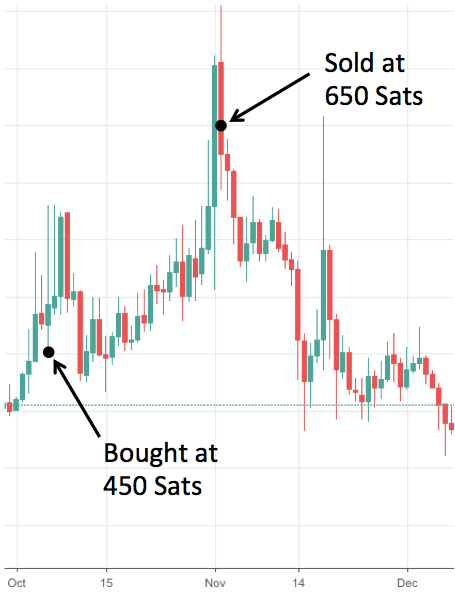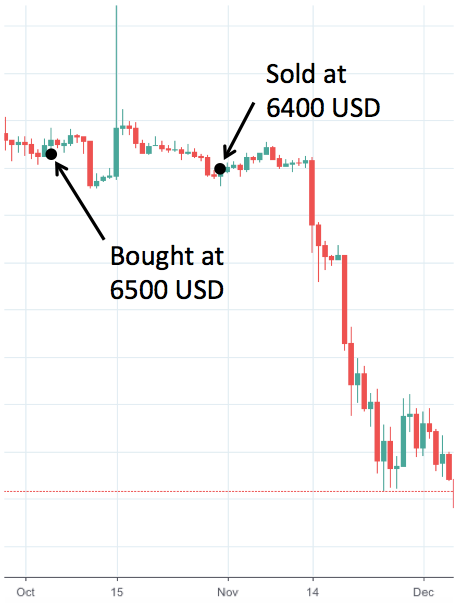Crypto and Taxes: How Do You Value Your Trades?
First Step: How are Cryptocurrencies Taxed?
You might think that cryptocurrencies are… well… currencies (due to it being in the name in all). But hey, what’s in a name? For better or worse, the IRS has ruled Bitcoin and all the altcoins are to be treated as ‘property’:
Q-1: How is virtual currency treated for federal tax purposes?
A-1: For federal tax purposes, virtual currency is treated as property. General tax principles applicable to property transactions apply to transactions using virtual currency
This means that cryptocurrency counts as a capital asset. As again mentioned by the IRS:
Almost everything you own and use for personal purposes, pleasure, or investment is a capital asset.
The following items are examples of capital assets.
- Stocks and bonds.
- A home owned and occupied by you and your family. Household furnishings.
- A car used for pleasure or commuting.
- Coin or stamp collections. (They probably mean the ‘real’ coins…)
- Gems and jewelry.
- Gold, silver, and other metals.
- Timber grown on your home property or investment property, even if you make casual sales of the timber.
Anytime you buy, sell, or exchange capital assets, you will need to determine if you have incurred any gains or losses. These gains and losses are determined at the fair market value. In a crypto world, the ‘true’ fair market value would likely be the average price of a coin across all exchanges.
Most likely, when determining your own taxes, consistently using the bigger exchanges is probably an ok move (such as Bitfinex for BTC USD or Binance for Altcoin to BTC)
Additionally, if you have mined any coins, they are valued at the time they are mined. And, as a disclaimer, most likely to you I am just some guy on the internet. I am not a tax professional and everything below (and above) is what I have learned over time. You should really do your own homework, but hopefully this gets you off to a good start =)
Second Step: Determining USD Value
Each time you make a trade on an exchange, that trade needs to be valued to determine the gains or losses associated with that particular trade. Lets go through a few examples. Take, for instance, a YOYO BTC trade:

YOYO BTC - Binance 2018
For reference, a ‘Sat’ or Satoshi, it 0.00000001 BTC (the smallest amount of BTC).
To keep things simple, let’s assume you bought 10,000 YOYO for 450 Sats and sold all 10,000 for 650 Stats. This is a gain of 44%. However, this is a gain in BTC. The IRS doesn’t really care how much you made in BTC, they want to know how much they can tax you in USD. So, now we need to look at the BTC USD chart:

BTC USD - Bitfinex 2018
Let’s just be happy this trade happened before the Great Fall of November 2018.
Regardless, when you bought the YOYO, BTC had a value of 6500 USD. This equates to a USD value for YOYO of 0.0293 USD. When you sold the YOYO for a massive 44% increase, the value of BTC dropped by 1.6%. At the time of sale, your YOYO was worth 0.0416 USD. This results in a gain of 42%, or, in the case of 1000 YOYO, a profit of $123.50.
FIFO: First In First Out
Additionally, the IRS wants you to value your trades “in a reasonable manner that is consistently applied.“
One of these ways to track and document each and every coin that you buy, sell, or trade. This can be easily applied to someone buying and selling real property (homes). Each house has its own specific address and the gains or losses associated in ‘trading’ homes can be easily tracked. Doing the same for crypto trading is more difficult (I don’t name each coin I trade and write on paper when I got it and for how much… that would be a lot of work).
Alternatively, you can use a First In First Out (FIFO) method. This basically means that the first coins you bought are the first coins you sell. FIFO for crypto also sounds like a good idea to this New York tax attorney at Forbes:
…Unless the cryptocurrency trader has contemporaneous records showing specific identification, if they are in the US Tax Court, they would be held to FIFO.
–Roger D. Lorence forbes.com
With this in mind, let’s take a look at another set of YOYO trades (assuming that the additional step of converting BTC to USD still takes place):

YOYO BTC – Binance 2018
Let’s say that you are the King of FOMO and you bought 10,000 YOYO right at the peak of a pump. Good Job! Not everyone has that kind of timing =)
Then let’s say that you move that 10,000 YOYO off to storage so that you have that you can always remember that time you were the tip.
You get better at trading and this time you buy another 10,000 YOYO for 350 Sats which you then sell for 400 Sats in a couple days. You might really want to calculate your profit as ‘buy for 350, sell for 400’, but FIFO suggests that you can’t.
The first YOYO you bought needs to be the first to be sold. As such, the IRS probably (again) doesn’t care if the 550 Sats YOYO is in storage or not, they ‘count as’ being sold for 400 Stats at a loss.
Losses should still be accounted for, however. The IRS may let you deduct losses from your tax liability:
If your capital losses exceed your capital gains, the amount of the excess loss that you can claim on line 13 of Form 1040 to lower your income is the lesser of $3,000, ($1,500 if married filing separately) or your total net loss shown on line 16 of the Form 1040, Schedule D.pdf. If your net capital loss is more than this limit, you can carry the loss forward to later years. You may use the Capital Loss Carryover Worksheet found in Publication 550, Investment Income and Expenses, or in the Form 1040, Schedule D Instructions, to figure the amount you can carry forward.
-IRS
Additionally, at this point you should also know that if you buy some crypto, and then don’t trade it for over a year (keeping the above example in mind), then after any gains or losses count as long-term instead of short-term. In general, long-term trades are better as there are less taxes.
Cherry Picking and LIFO
FIFO might cause the want to cherrypick which coins are ‘used’ in which trades. Consider the following:

YOYO BTC – Binance 2018
Assume you bought 10,000 YOYO at each buy and sold 10,000 YOYO at the top. You plan to hold the other 20,000 YOYO for quite some time.
It would be great to report to the IRS that you really sold the 600 Sats YOYO for 750 Sats whereas FIFO would say you need to use the 300 Sats YOYO. Your taxable profit would be much less if you used the 600 Sats. This is for sure, but unless you have extensive documentation, it probably wouldn’t pass.
Using a Last In First Out (LIFO) system would let you say that you really sold your 600 Sat YOYO for 750 Sats. Additionally, long-term trades are taxed at smaller rates than short-term trades. So a LIFO system seems to make a lot of sense.
However, due to the difference in long and short term tax rates, this probably won’t be accepted by the IRS (For them, more in taxes is good, not bad). This is also noted by Forbes:
Choosing an option in a trade accounting program to cherry pick the highest cost basis for lowering capital gains after the fact is probably not acceptable to the IRS. “Last in first out” (LIFO) is also expected not acceptable.
-Forbes
Additional Food for Thought
Unless you are trading primarily BTC to Fiat pairs, you will most likely need to do a two step conversion process to determine the value of your trades. The first will be to convert your trades into the base pair, and then find the base pair equivalent in Fiat.
Also, keep in mind that USDT, TUSD, and USDC are not USD. They are also ‘property’ who’s values change:

USDT (‘Stable Coin’) USD – Kraken
Personal Story: I am not a huge day trader. Traded a fair number of times throughout the year, but when I went to download all of my trades from Binance, I found that I had over 3000 (!) trades!
This most likely comes from one of my orders being filled by serval smaller orders (all those maker bots out there).
I didn’t want to spend the time to hunt down each of the 3000 trades values, and I was not doing my best in keeping track of their values in paperwork. The only thing I knew at that time is that I was in crypto and tomorrow I am going to pay off the house.
Well…. Still working on paying off the house. But now I have this cool new tool that does all this calculation work for me. It’s called Beer:30. Basically, sit back, drink a beer, and let automation analyze your thousands of trades.
Automation: reasonable and consistently applied. Just like the IRS wants. =)
Come check out more at craft-crypto.com
Cheers!
-Augustine
Informative post for people living in the US, you did your homework!🙏
Posted using Partiko iOS
Thanks!